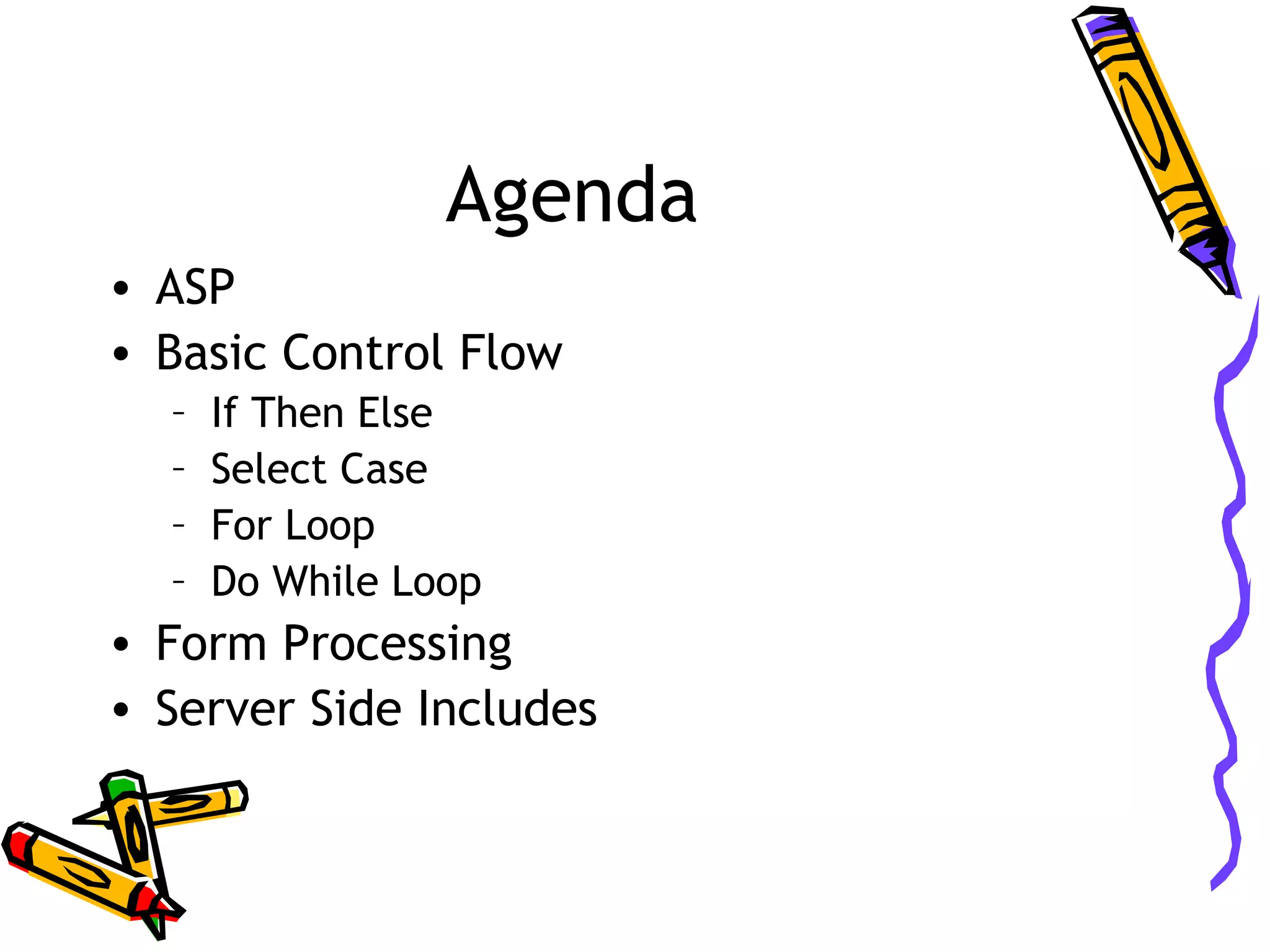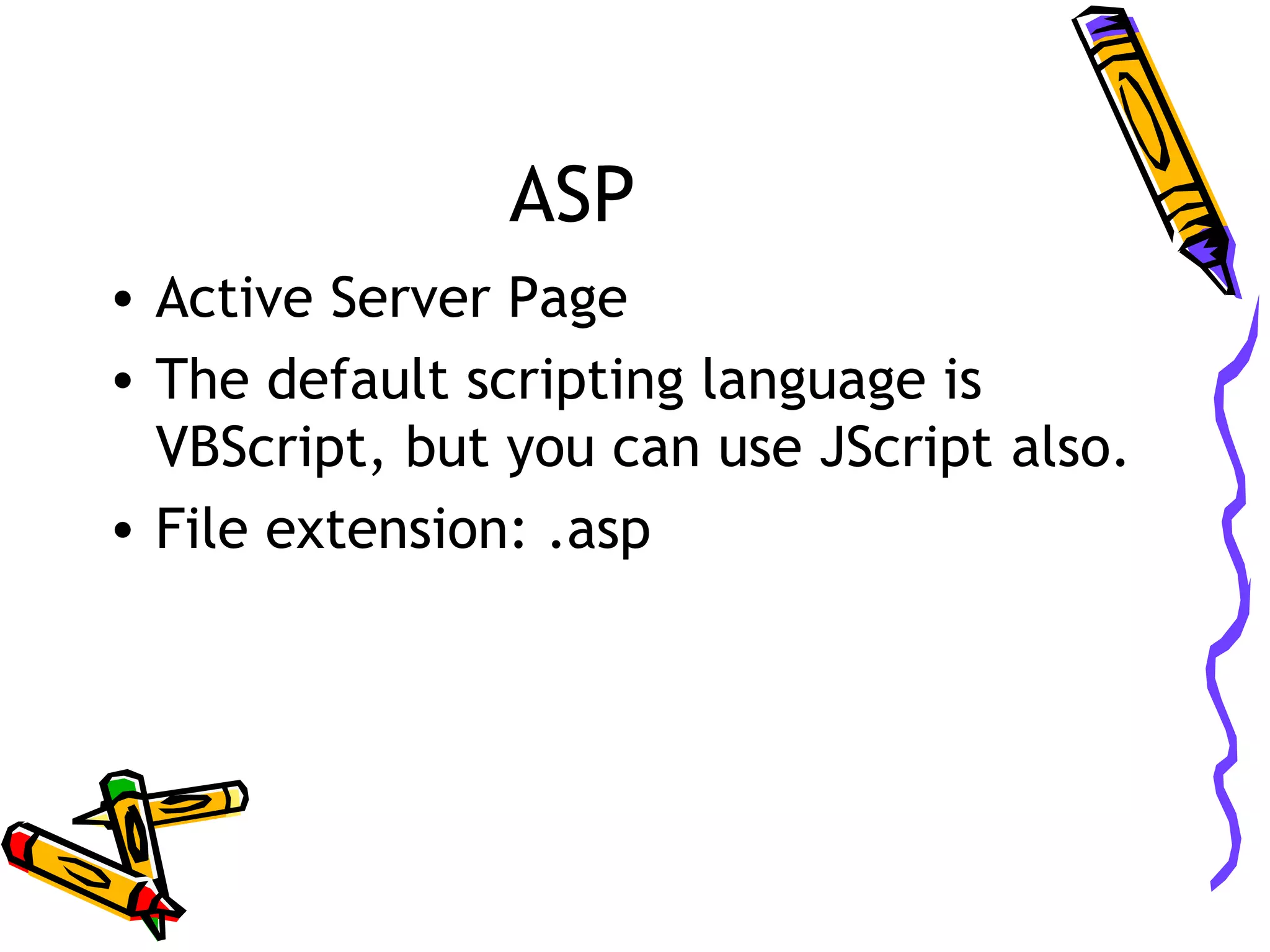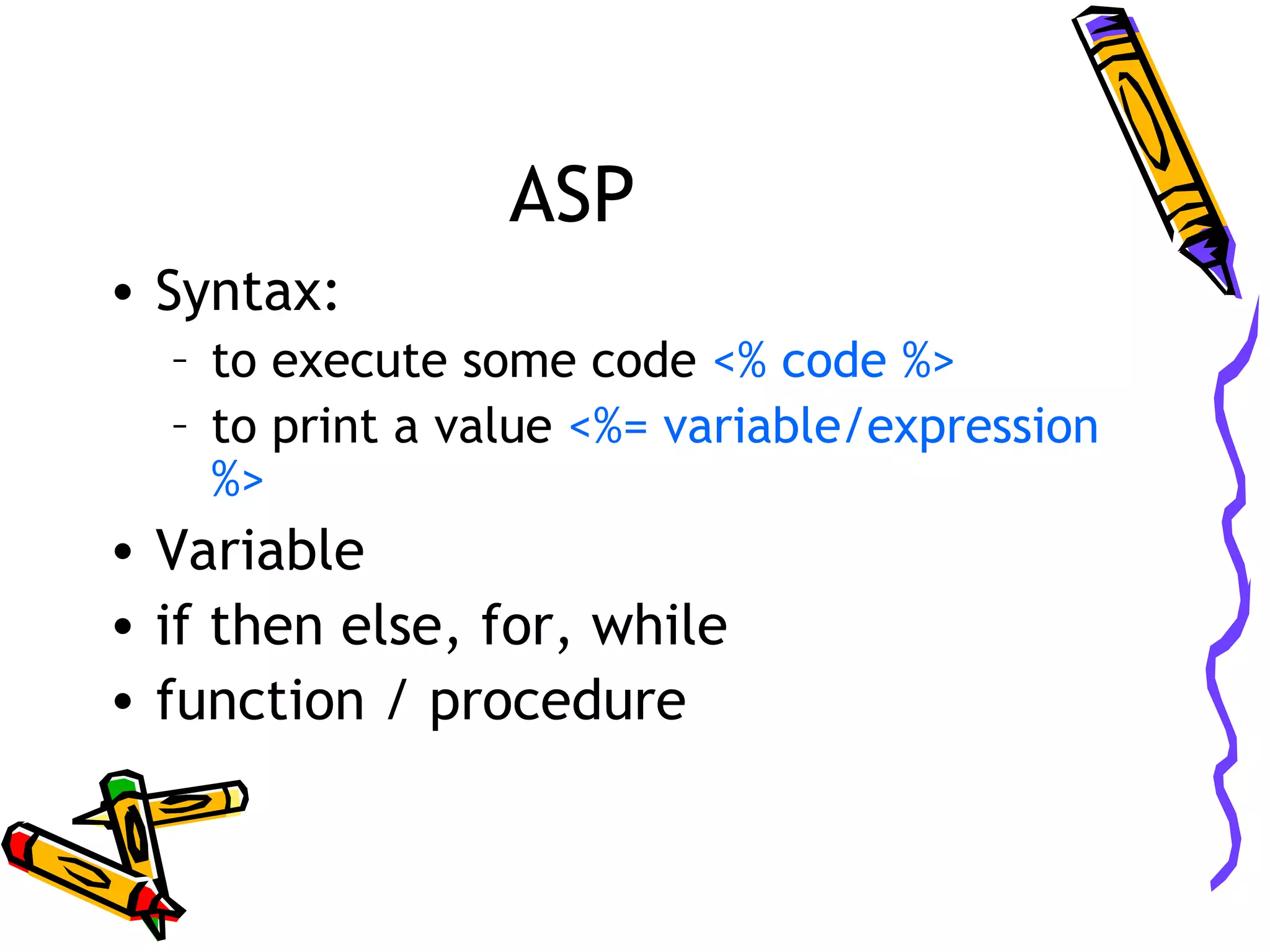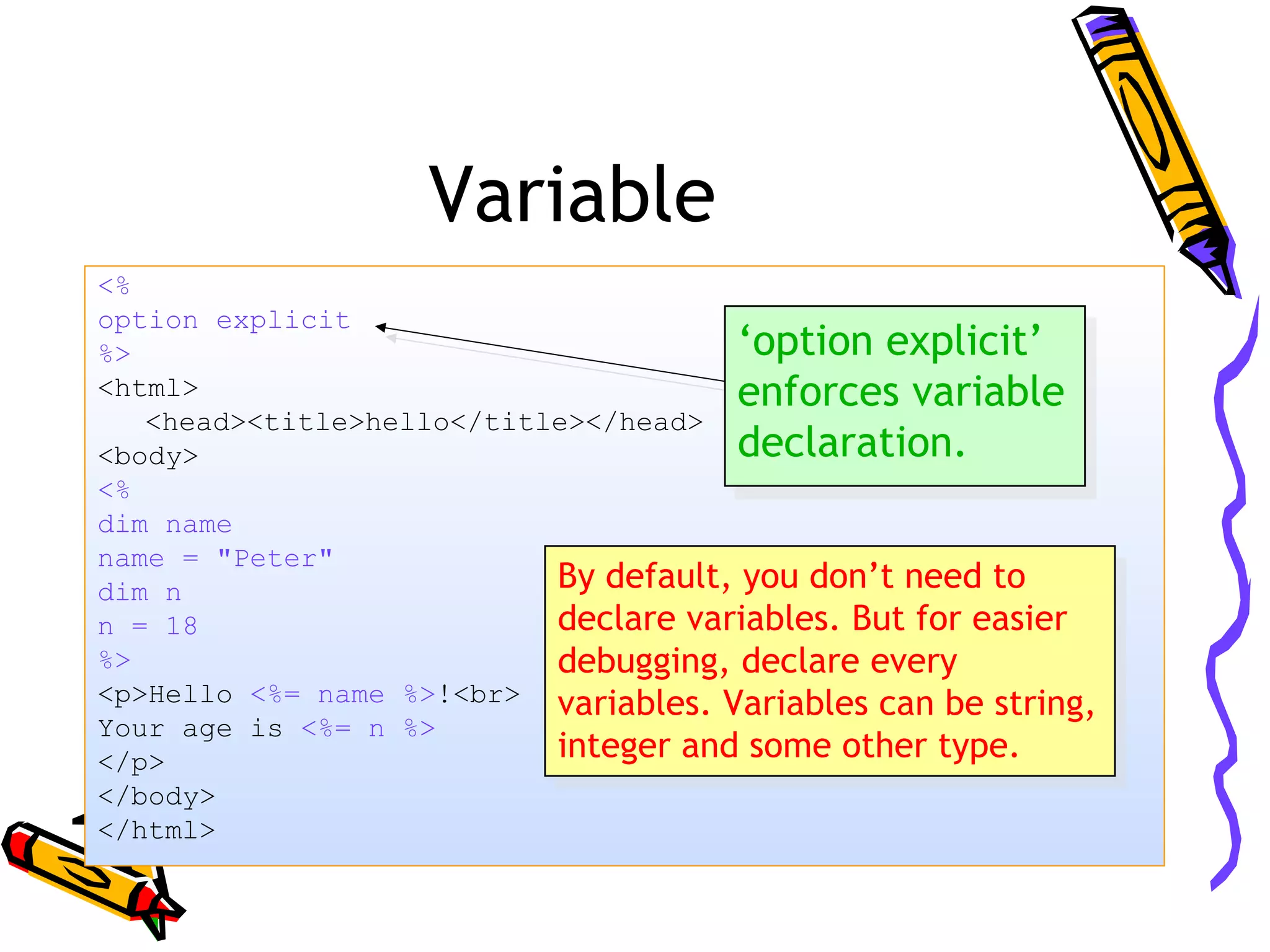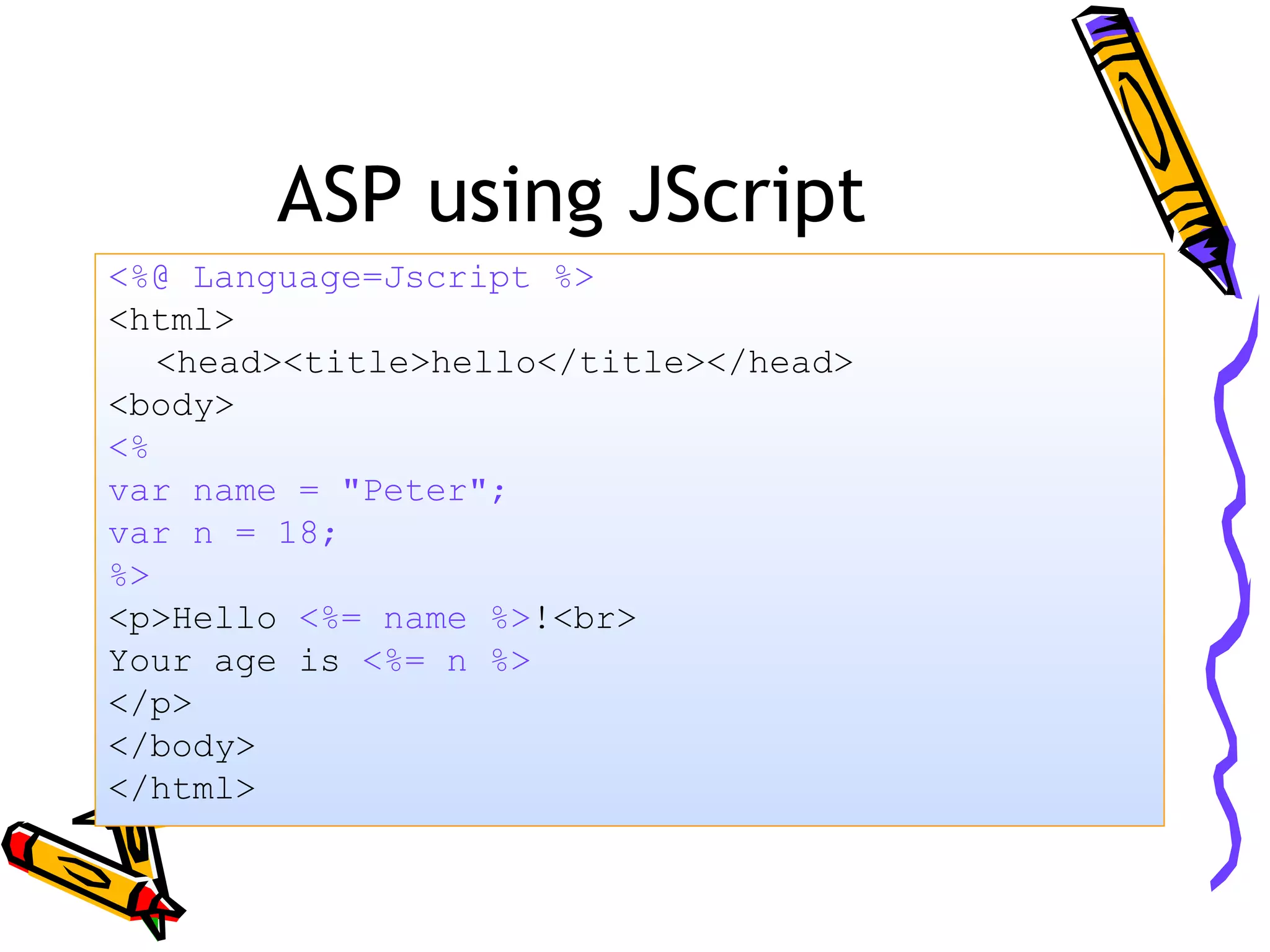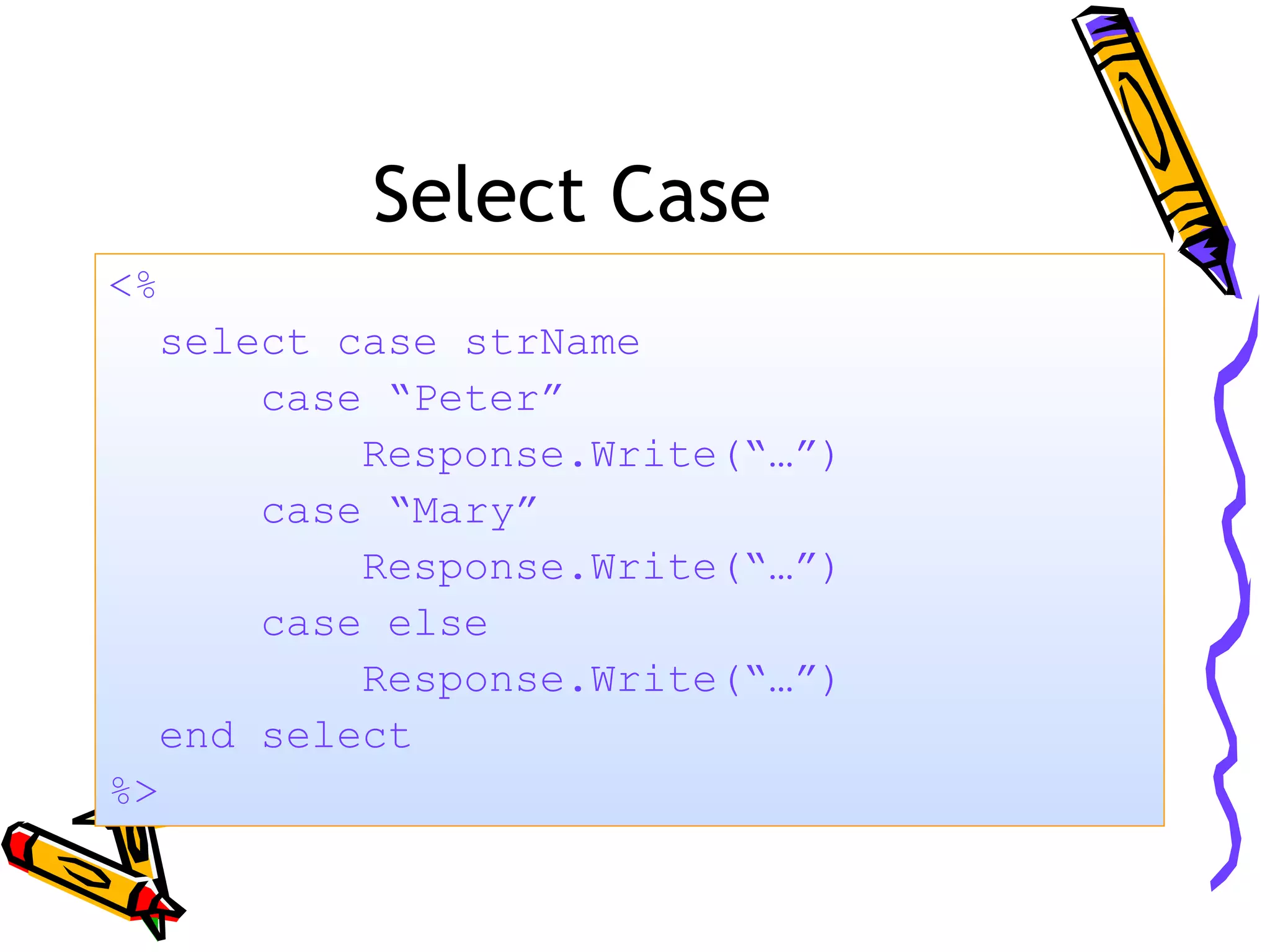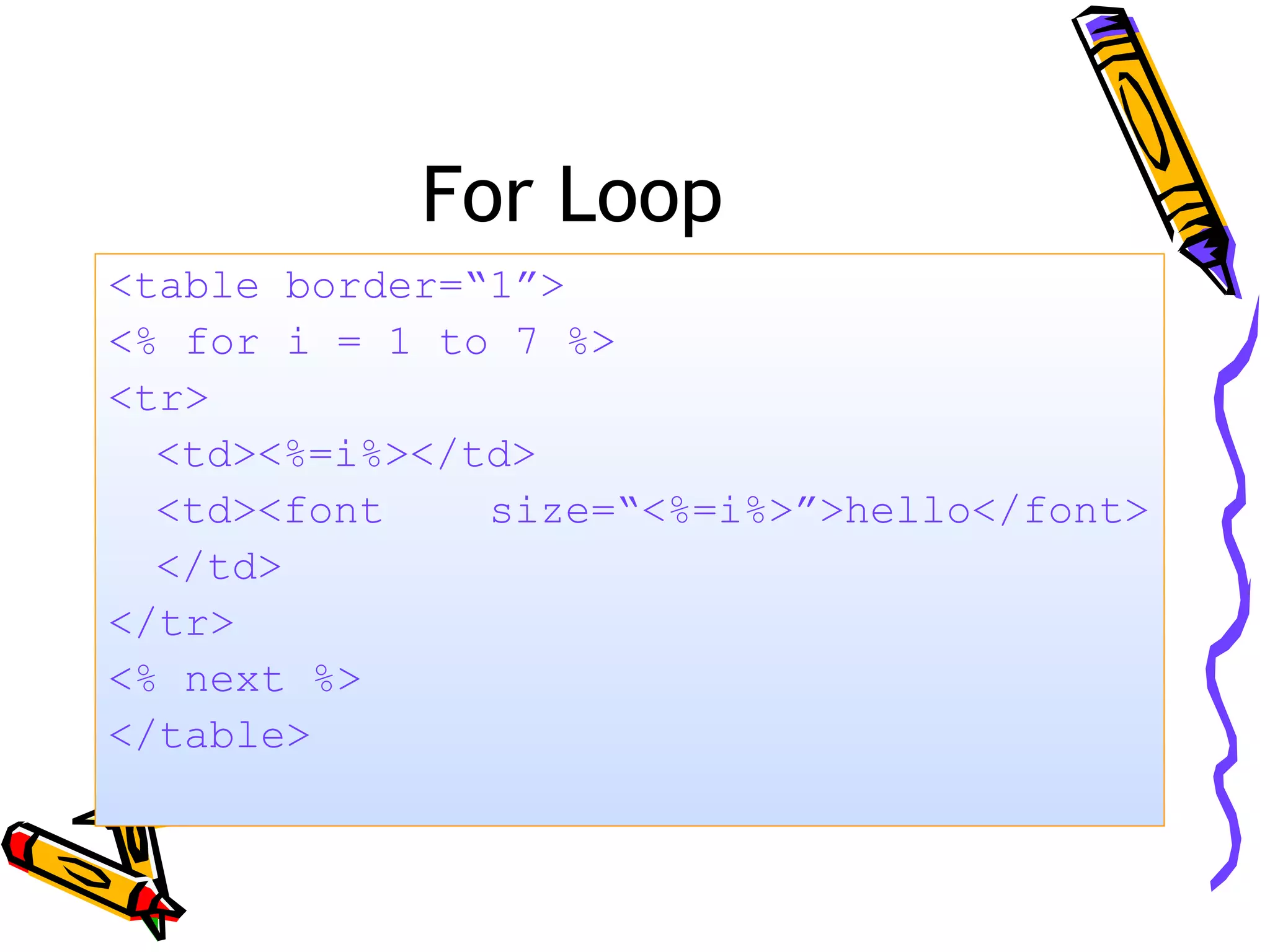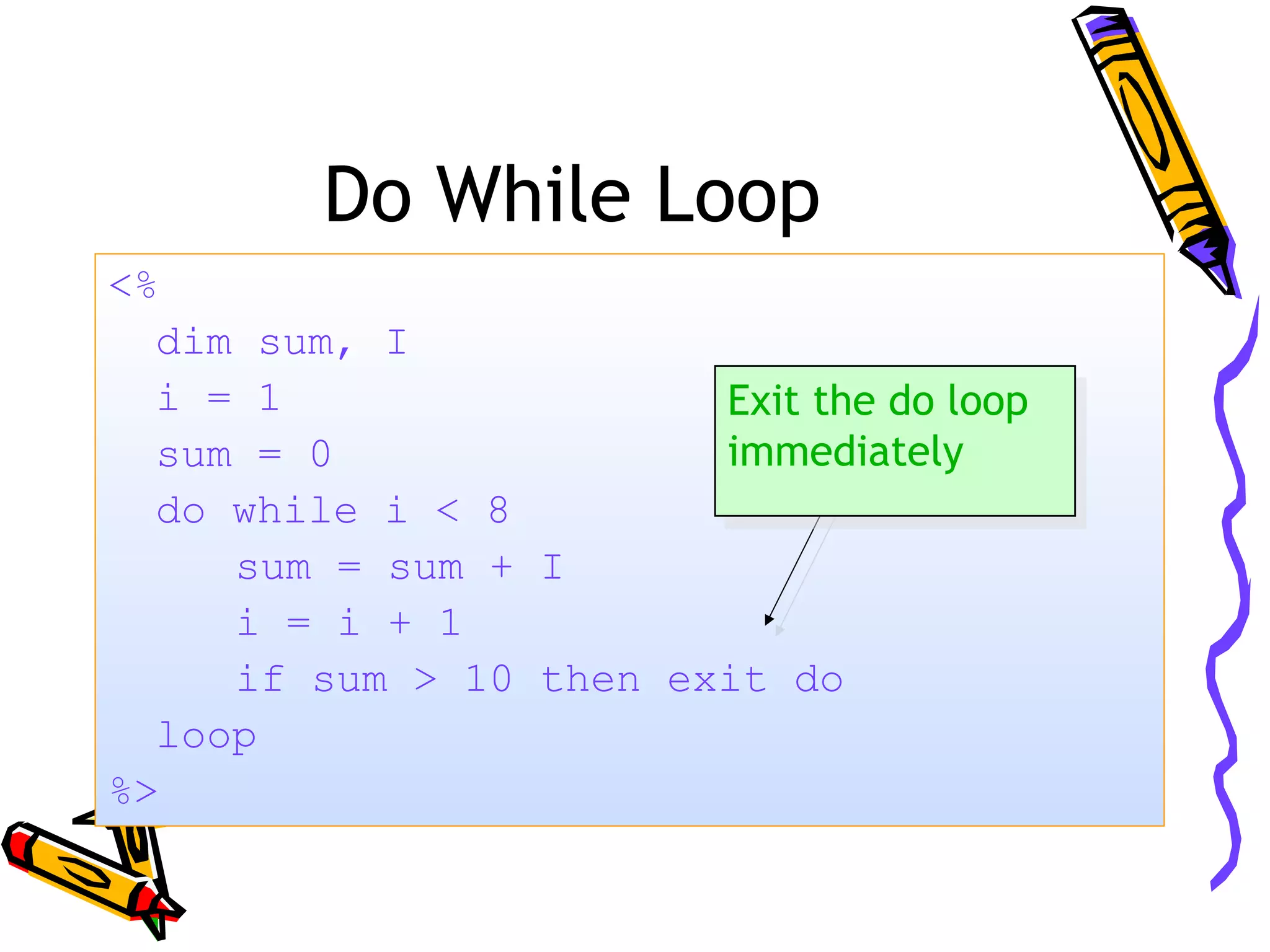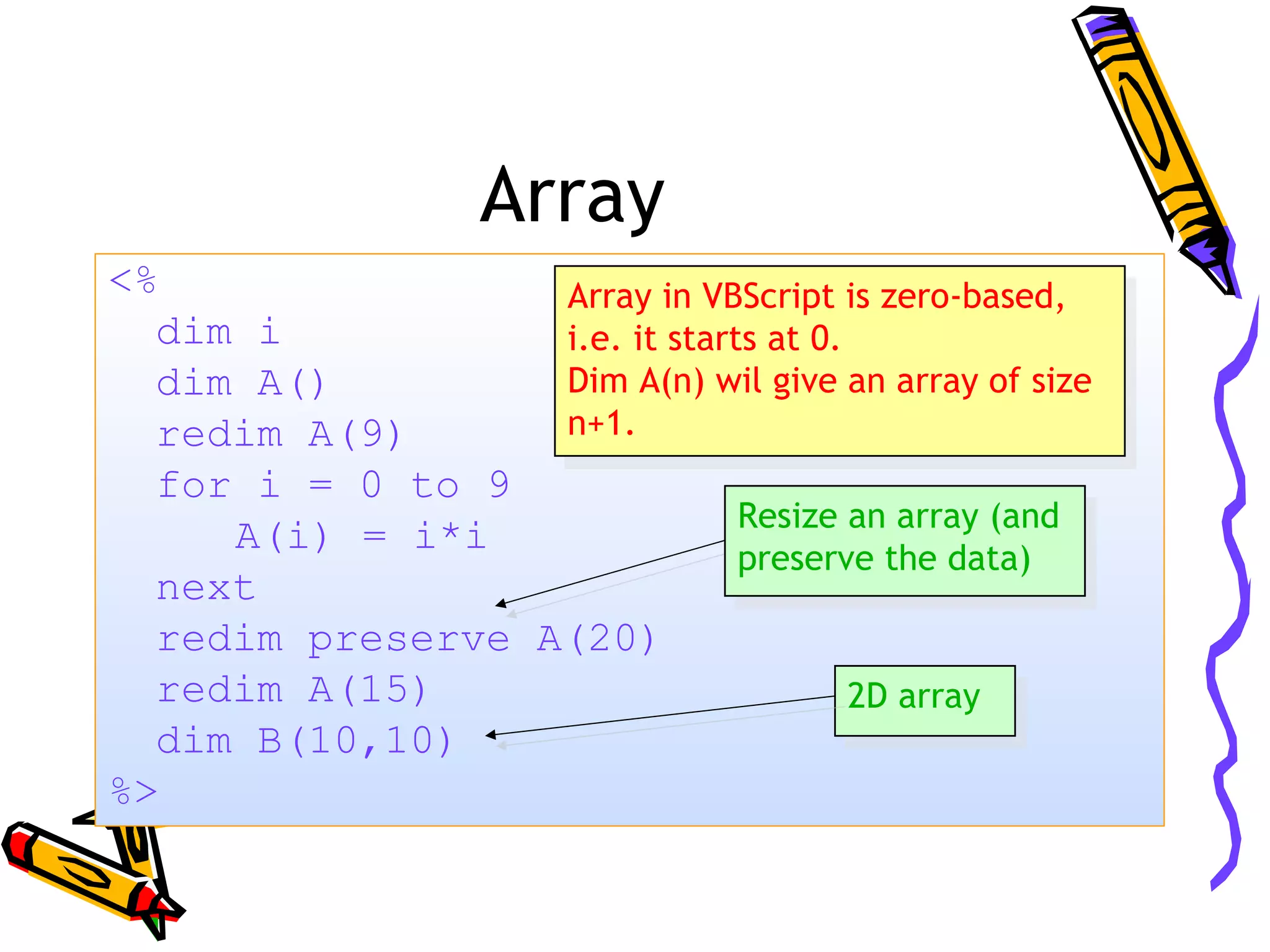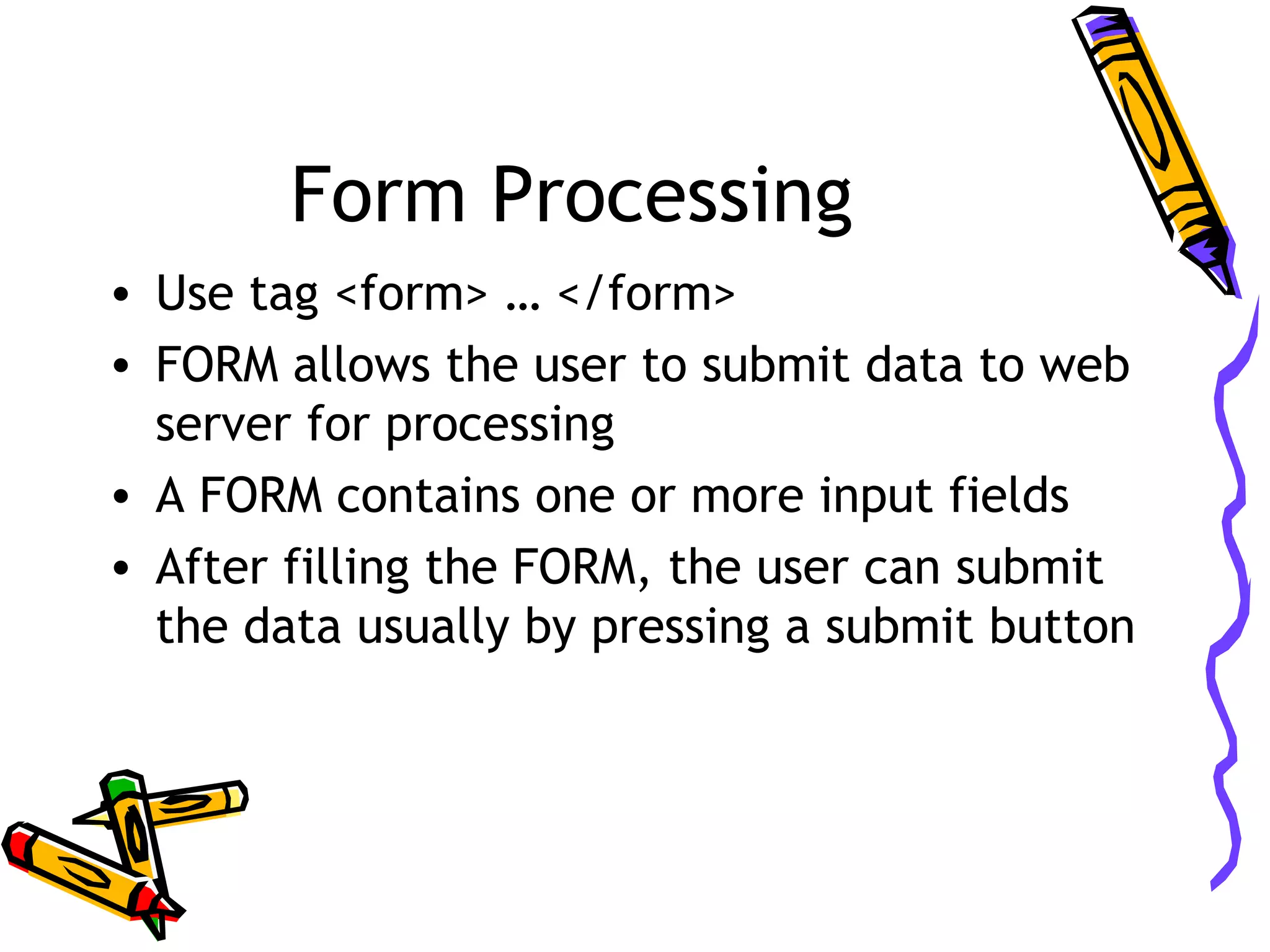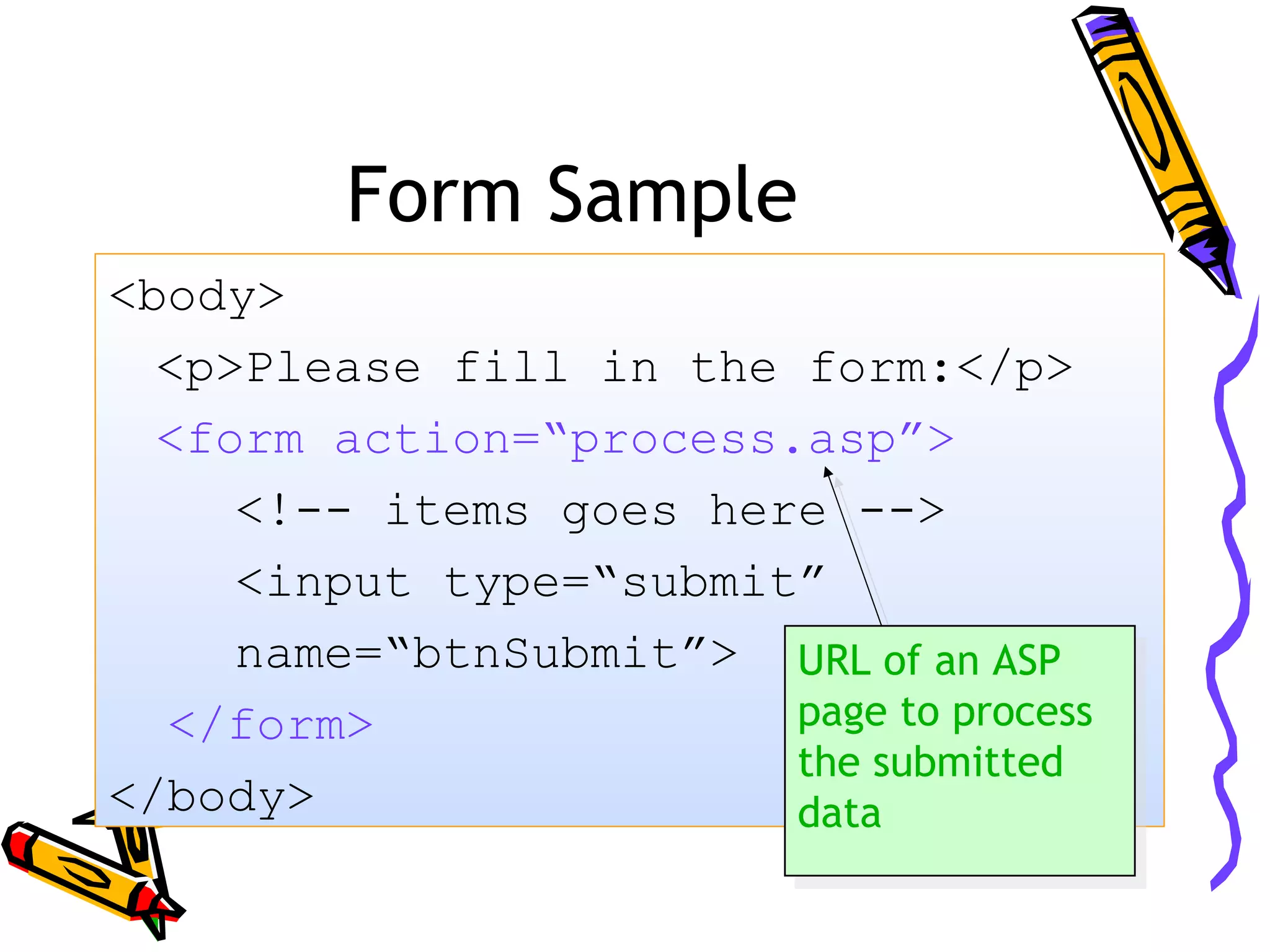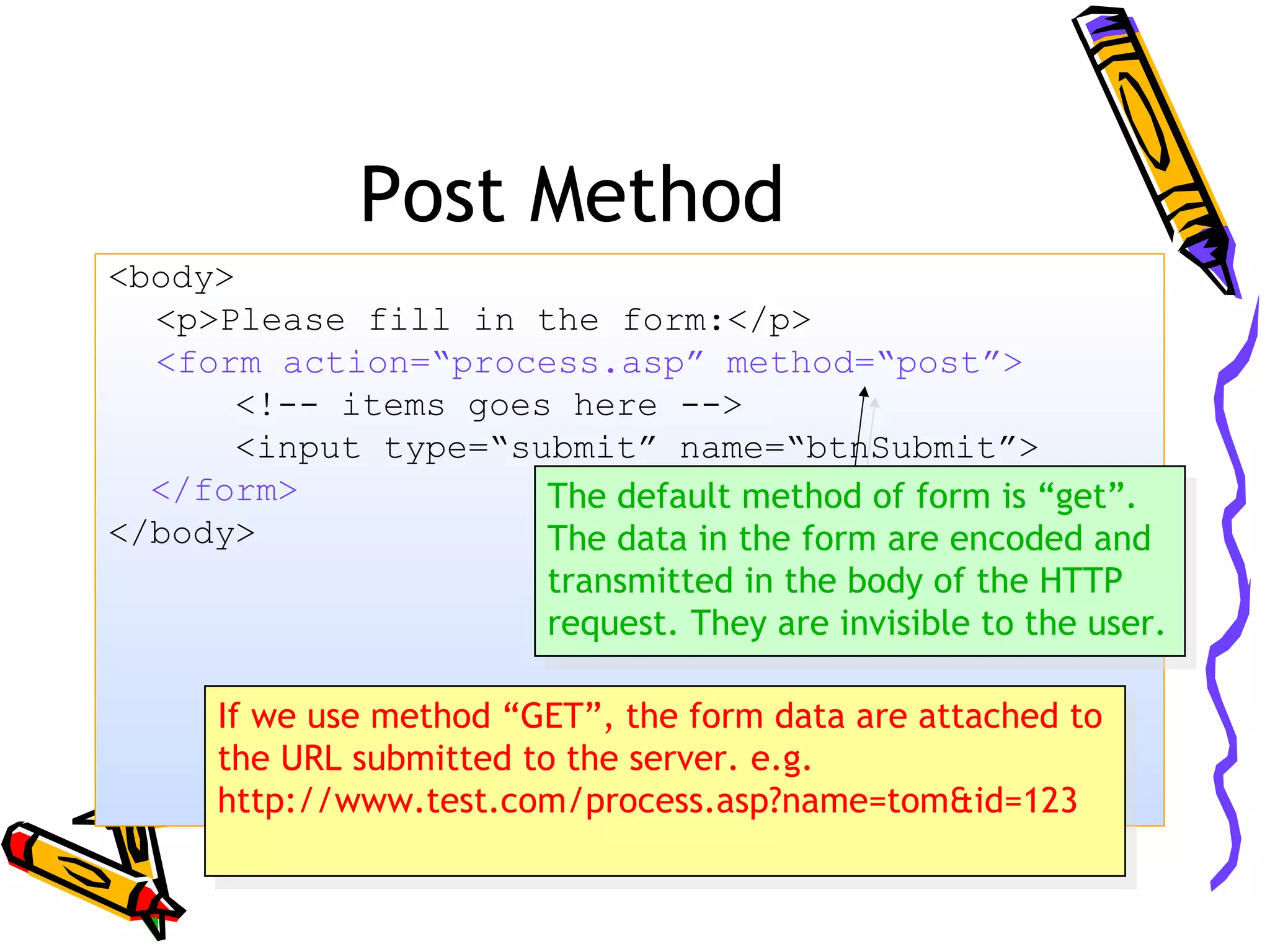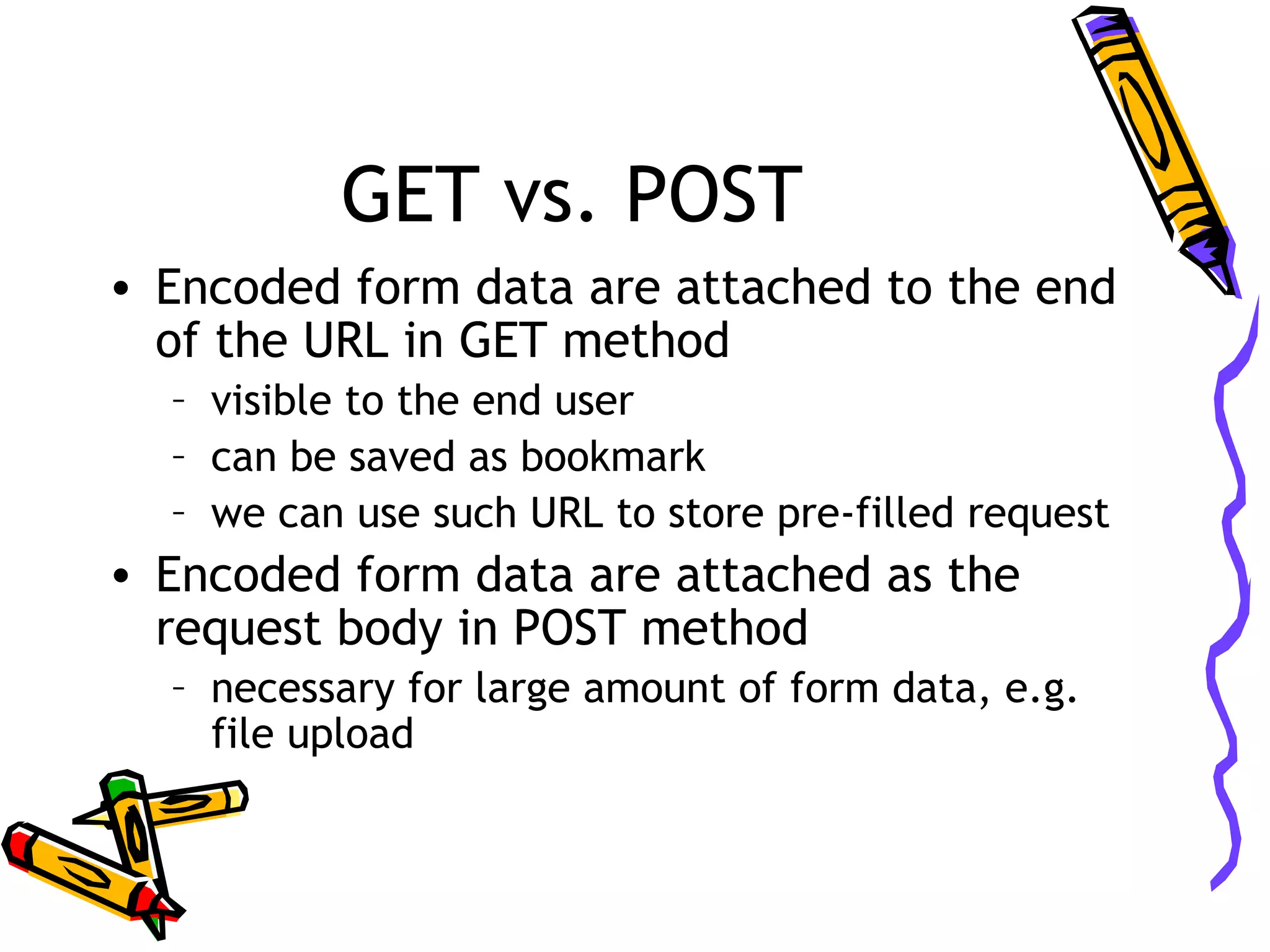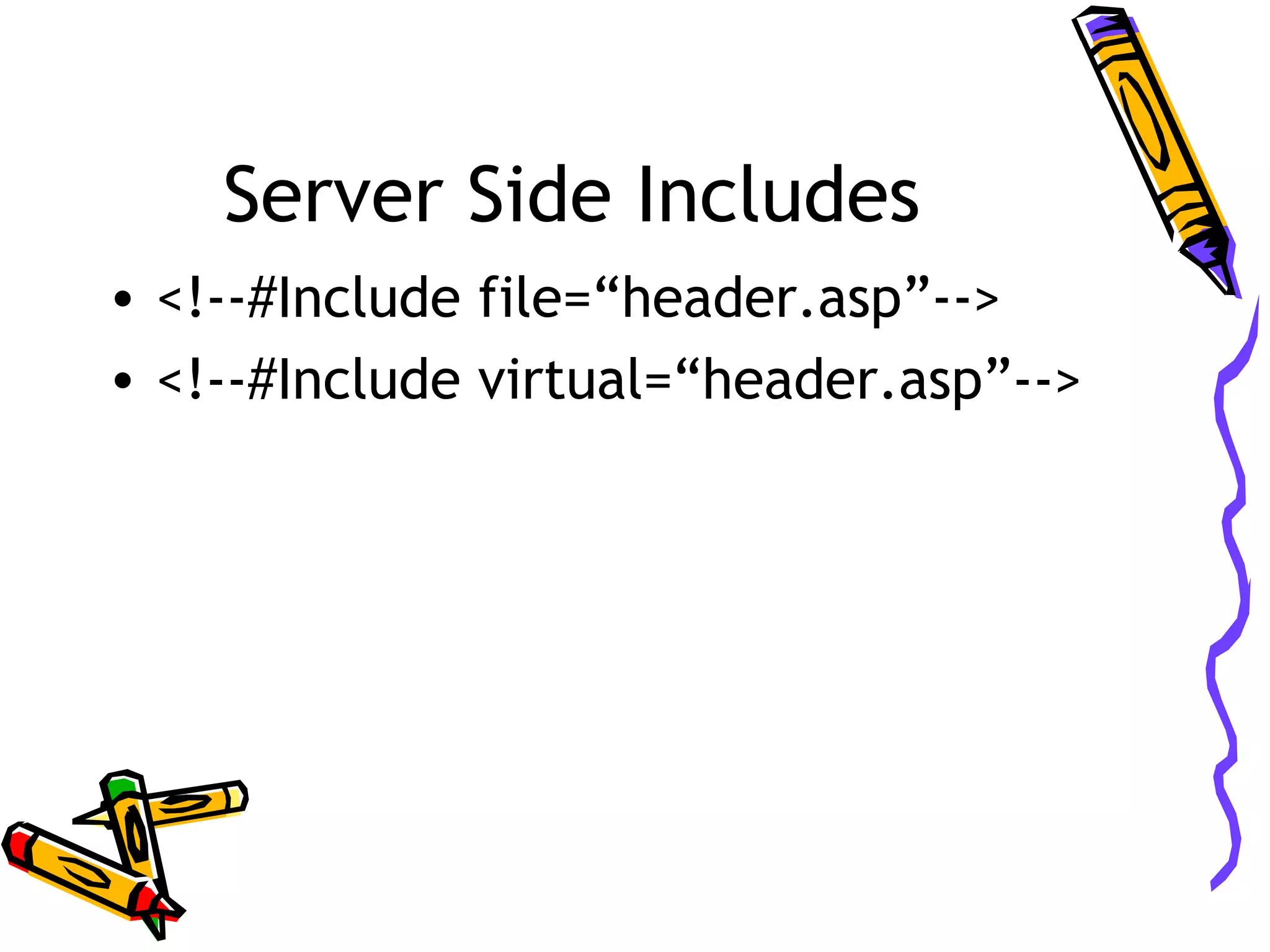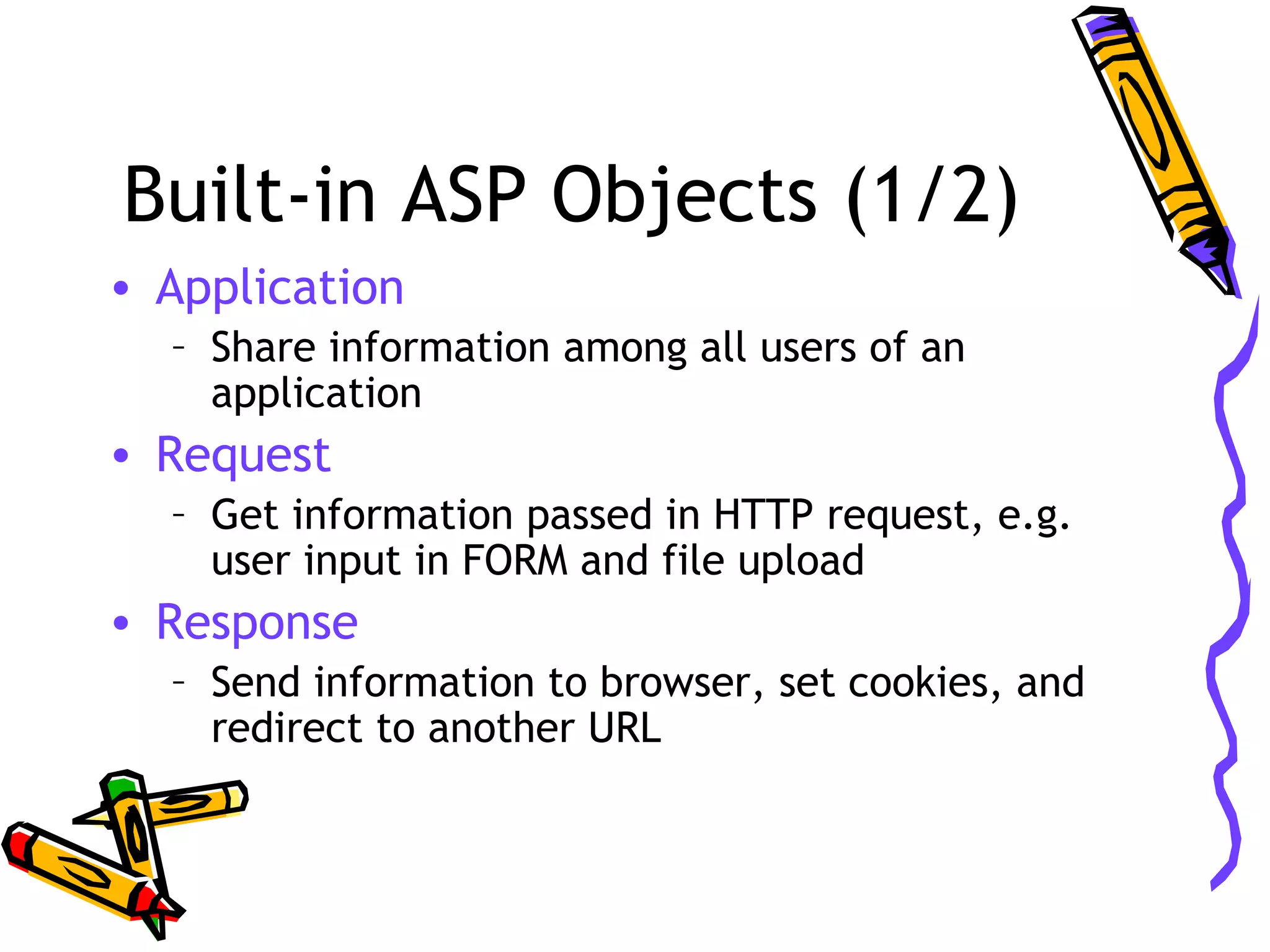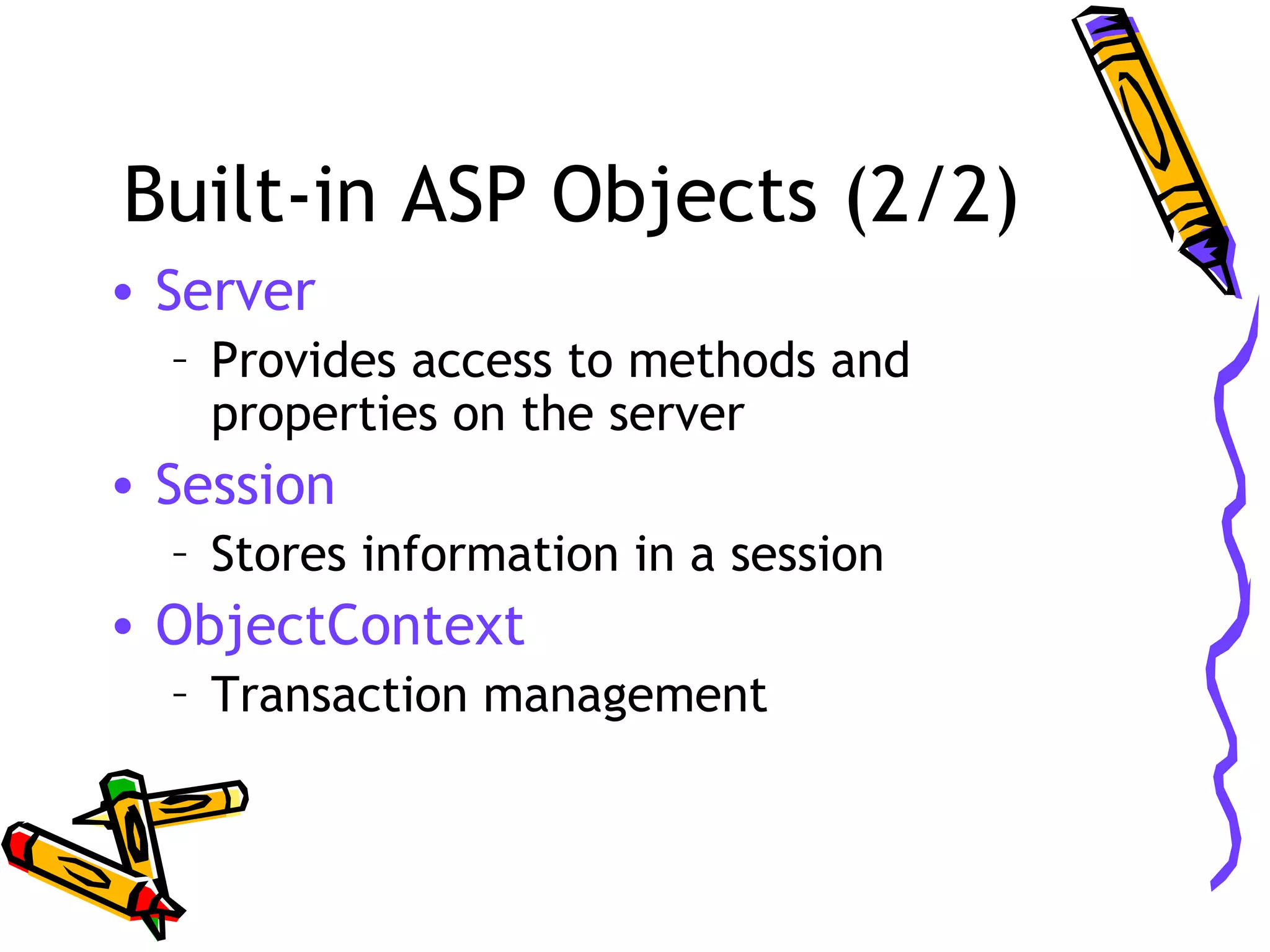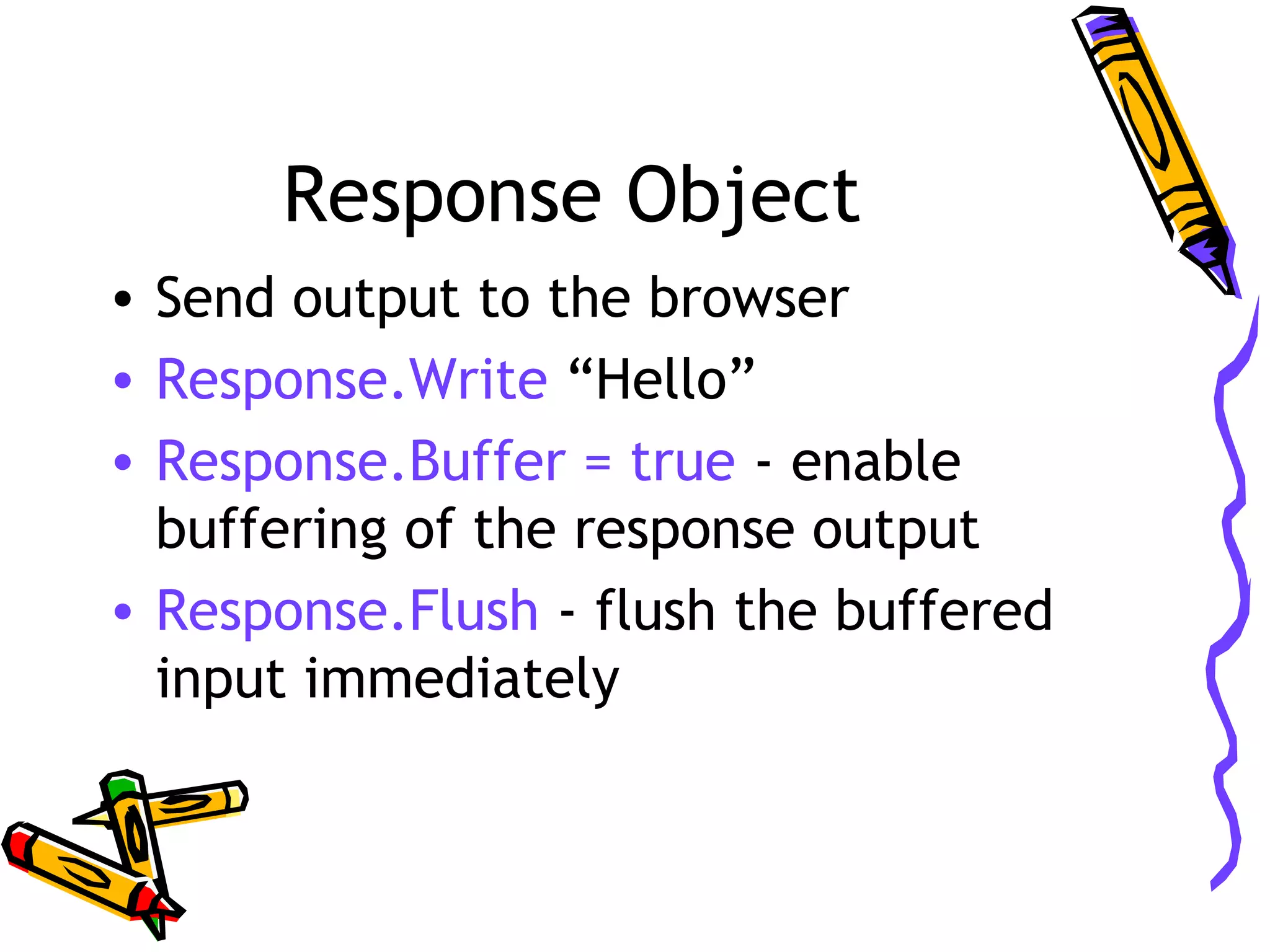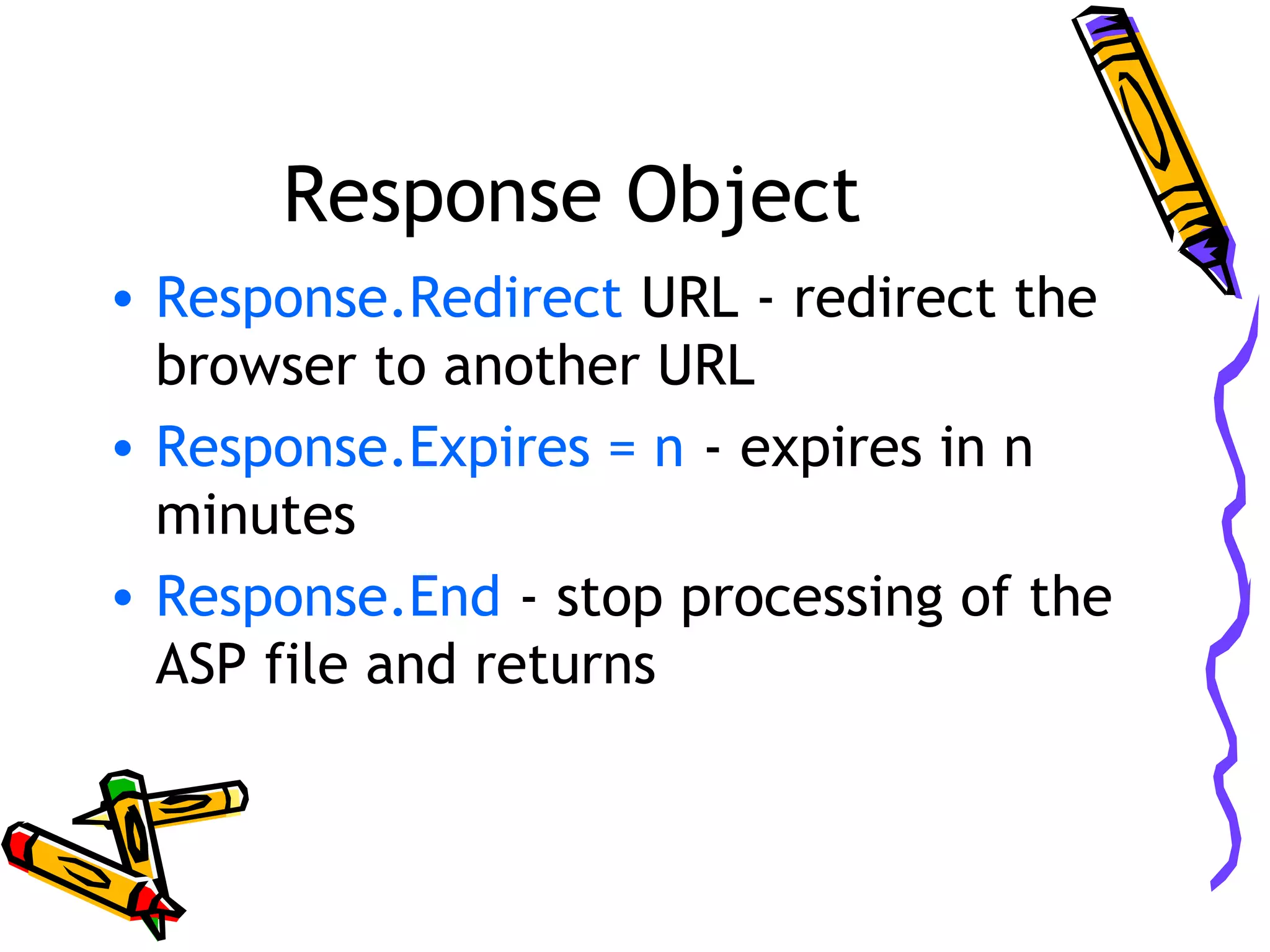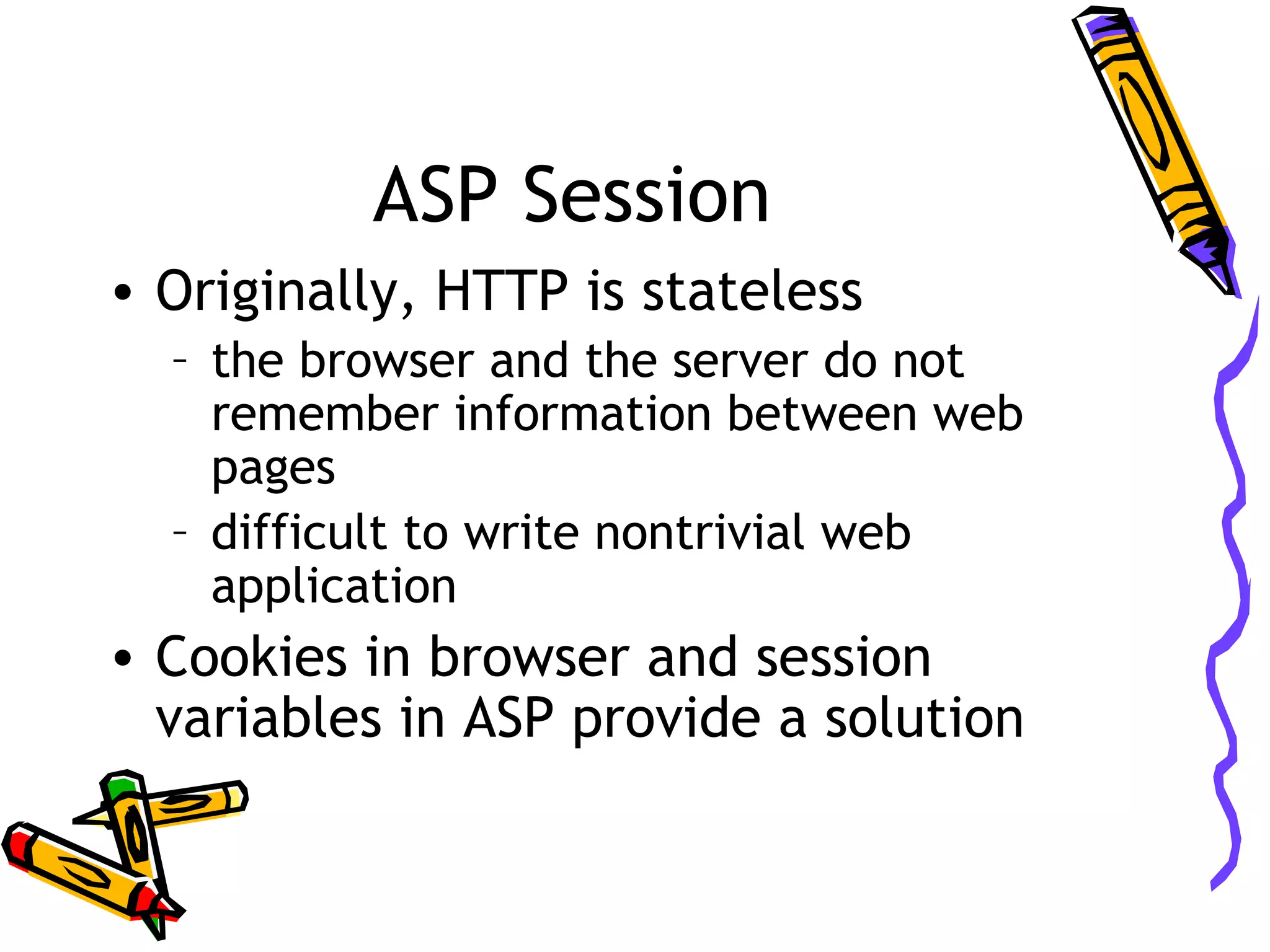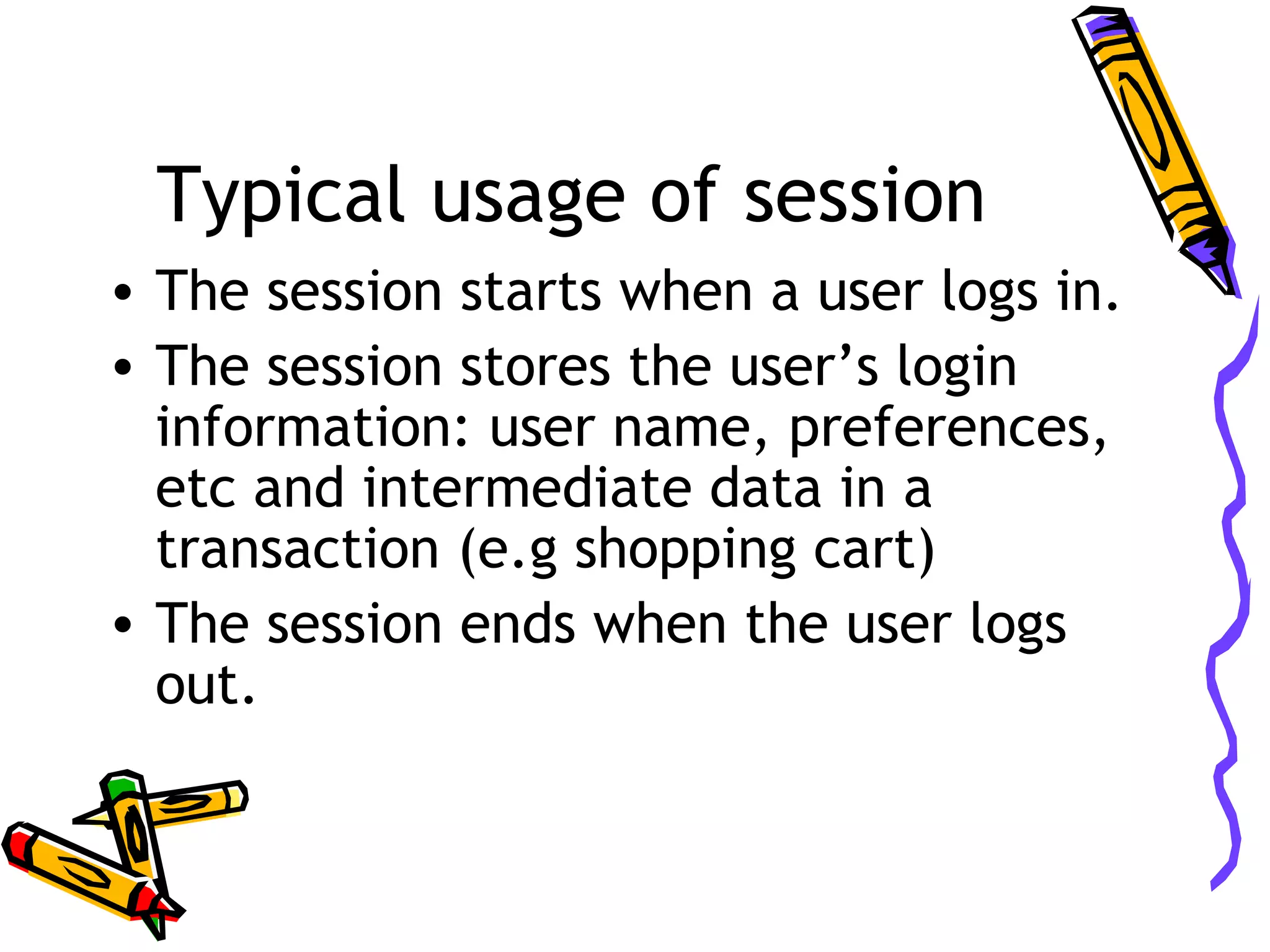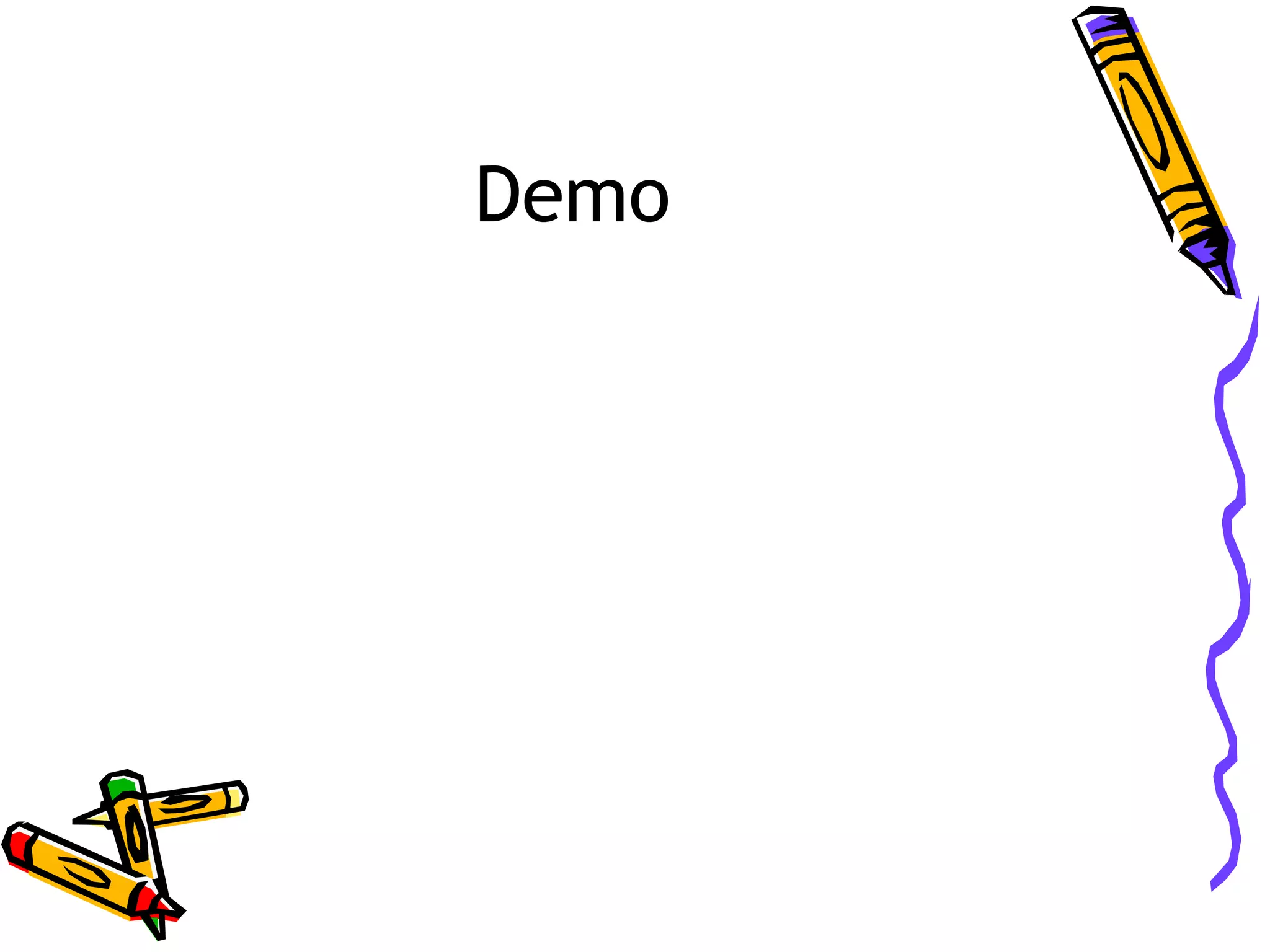The document provides an introduction to Active Server Pages (ASP) and covers several key concepts: - ASP allows for server-side scripting using VBScript or JScript to dynamically generate web pages. Scripting code is placed between <% and %> tags. - Basic programming constructs like variables, if/else statements, loops, and functions can be used to add logic and dynamically output content. - Forms allow collecting user input which is submitted to an ASP processing page via the POST or GET methods. - Server-side includes and built-in objects like Request, Response, and Session provide functionality to include pages, access submitted data, send output, and maintain state across pages.

